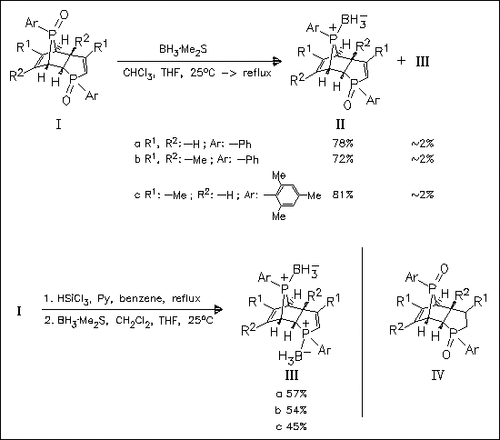ChemInform Abstract: Phosphine—Boranes Based on the 7-Phosphanorbornene Framework: A Regioselective Approach to the Monoboranes of the Dimers of Phospholes.
Abstract
ChemInform is a weekly Abstracting Service, delivering concise information at a glance that was extracted from about 100 leading journals. To access a ChemInform Abstract of an article which was published elsewhere, please select a “Full Text” option. The original article is trackable via the “References” option.
ChemInform Abstract
The reaction of phosphole oxide dimers (I) with BH3×Me2S unexpectedly provides the mono-phosphine—borane complexes (II) together with minor amounts of the diborane complexes (III). This reduction—borane complex formation sequence to compounds (II) proceeds regioselectively at the bridgehead phosphorus atom. The expected borane reduction of the cyclopentene double bond to give derivatives (IV) is observed only in traces. While the amount of diboranes (III) cannot be improved by longer reaction times or higher borane concentrations, they are smoothly accessible by silane reduction followed by reaction with borane.





